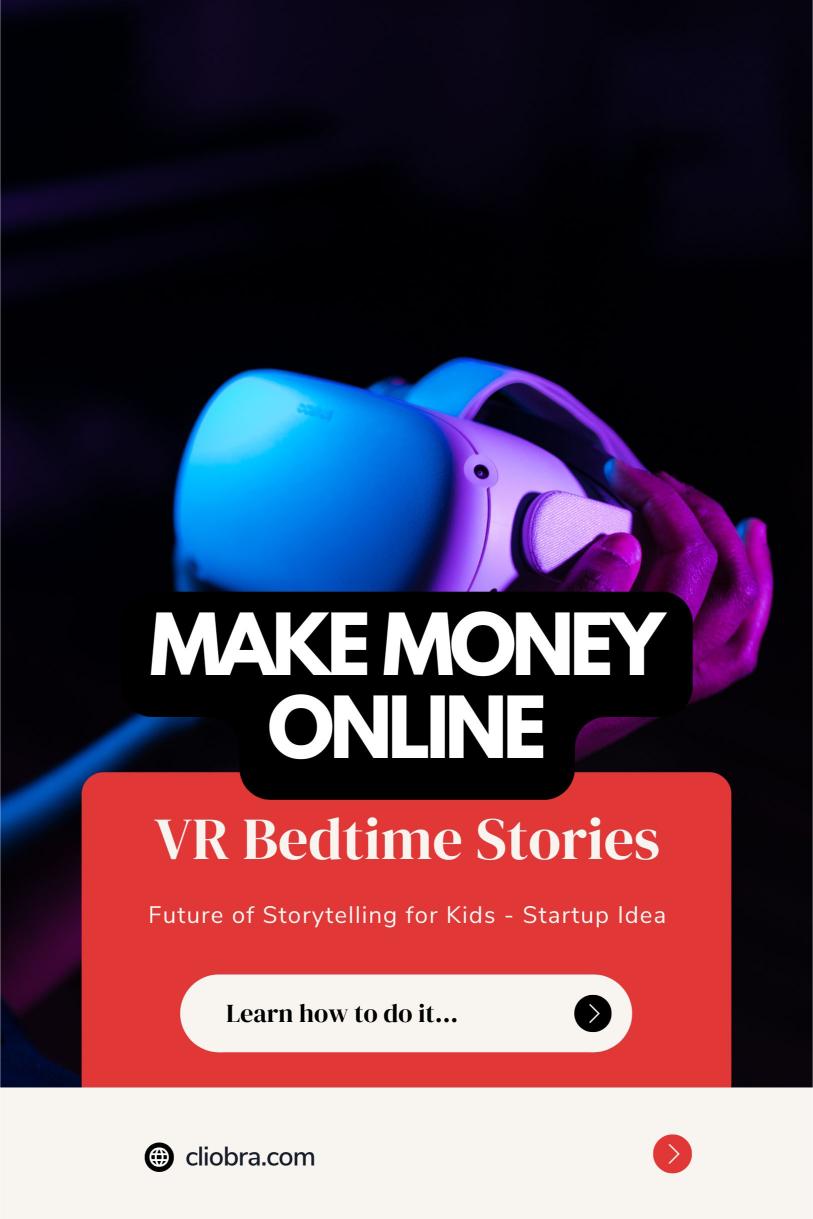Last Updated on October 23, 2024 by Arif Chowdhury
The problem with traditional bedtime stories.
Ever tried to get a kid to sit still for a bedtime story?
It’s like herding cats.
They’re fidgeting, asking a million questions, or worse – sneaking peeks at their tablets.
And let’s be real, after a long day, your storytelling game isn’t exactly Oscar-worthy.
But what if there was a way to make story time so engaging that kids actually begged for it?
Enter: Virtual Reality Storytelling.
What is Virtual Reality Storytelling?
It’s exactly what it sounds like.
Stories come to life in a 3D world that kids can explore.
They’re not just hearing about a magical forest – they’re standing in it.
That dragon? It’s right there, breathing fire over their heads.
And the best part? It all happens from the comfort of home.
Why VR Storytelling is a Game-Changer
Here’s the deal: Kids today are digital natives.
They’re growing up with tech that we could only dream of.
VR storytelling speaks their language.
It’s not just a story – it’s an experience.
And experiences? They stick.
The Benefits of VR Storytelling for Kids
Let’s break it down:
- Improved Engagement: When kids are in the story, they’re fully present. No more zoning out.
- Enhanced Comprehension: Seeing is believing. And understanding.
- Boosted Creativity: VR worlds spark imagination like nothing else.
- Increased Empathy: Walking in a character’s shoes? That’s empathy 101.
- Better Retention: Experiential learning leads to better memory retention.
According to a study by the University of Maryland, people retain information better in VR environments compared to traditional desktop displays.
The Business Opportunity
Here’s where it gets interesting.
VR storytelling for kids? It’s not just a cool idea. It’s a massive business opportunity.
Why?
Because parents will pay for anything that:
- Makes their kids smarter
- Keeps them entertained
- Doesn’t involve mindless screen time
VR storytelling checks all these boxes.
And the market? It’s huge.
The global VR market is expected to reach $184.66 billion by 2026, growing at a CAGR of 33.85% from 2019 to 2026.
How to Get Started
Thinking of jumping into this space? Here’s what you need to know:
1. Content is King
Without great stories, the best tech in the world is useless.
Focus on:
- Engaging plots
- Relatable characters
- Age-appropriate content
- Interactive elements
2. User Experience is Queen
Kids have zero patience for clunky interfaces.
Your VR experience needs to be:
- Intuitive
- Smooth
- Glitch-free
3. Safety First
Parents need to trust your product.
Ensure:
- Age-appropriate content filters
- Parental controls
- Safe, comfortable headsets
4. Partnerships are Key
Team up with:
- Children’s book authors
- Animation studios
- Child psychologists
Their expertise will elevate your product.
The Technology Behind VR Storytelling
Let’s geek out for a sec:
VR storytelling relies on:
- High-resolution displays
- Motion tracking
- 3D audio
- Haptic feedback
But here’s the kicker: You don’t need to be a tech wizard to create VR stories.
Tools like Unity and Unreal Engine are making VR development more accessible than ever.
Monetization Strategies
How do you turn this into a money-making machine?
Options:
- Subscription Model: New stories every month for a flat fee.
- Pay-per-Story: Let parents buy individual stories.
- Freemium: Basic stories free, premium content paid.
- Partnerships: Team up with schools or libraries for bulk purchases.
Challenges to Consider
It’s not all sunshine and rainbows. Be ready for:
- High Initial Costs: VR tech isn’t cheap.
- Content Creation: Producing high-quality VR content is time-consuming.
- Tech Adoption: Not every household has VR headsets. Yet.
- Screen Time Concerns: Some parents might be wary of more tech exposure.
The Future of VR Storytelling
Here’s where it gets exciting:
Imagine:
- AI-Generated Stories: Personalized tales based on a child’s preferences.
- Multi-Player Experiences: Kids joining their friends in virtual storyworlds.
- Educational Integration: VR stories that teach languages, history, or science.
The possibilities are endless.
Getting Started: Your Action Plan
Ready to dive in? Here’s your game plan:
- Research: Dive deep into the VR market. Know your competitors.
- Assemble Your Team: You’ll need storytellers, developers, and marketers.
- Develop a Prototype: Start small. One killer story is better than ten mediocre ones.
- Test, Test, Test: Get your product in front of real kids. Their feedback is gold.
- Iterate: Use feedback to improve. Then test again.
- Launch: Start small, maybe with a beta version.
- Market: Focus on parents, educators, and kid-friendly platforms.
- Scale: As you gain traction, expand your library and features.
Conclusion
VR storytelling for kids isn’t just the future – it’s happening now.
It’s a perfect storm of technology, storytelling, and market demand.
The question isn’t whether this will be big.
It’s whether you’ll be part of it.
So, are you ready to bring bedtime stories into the 21st century?
The kids are waiting.
